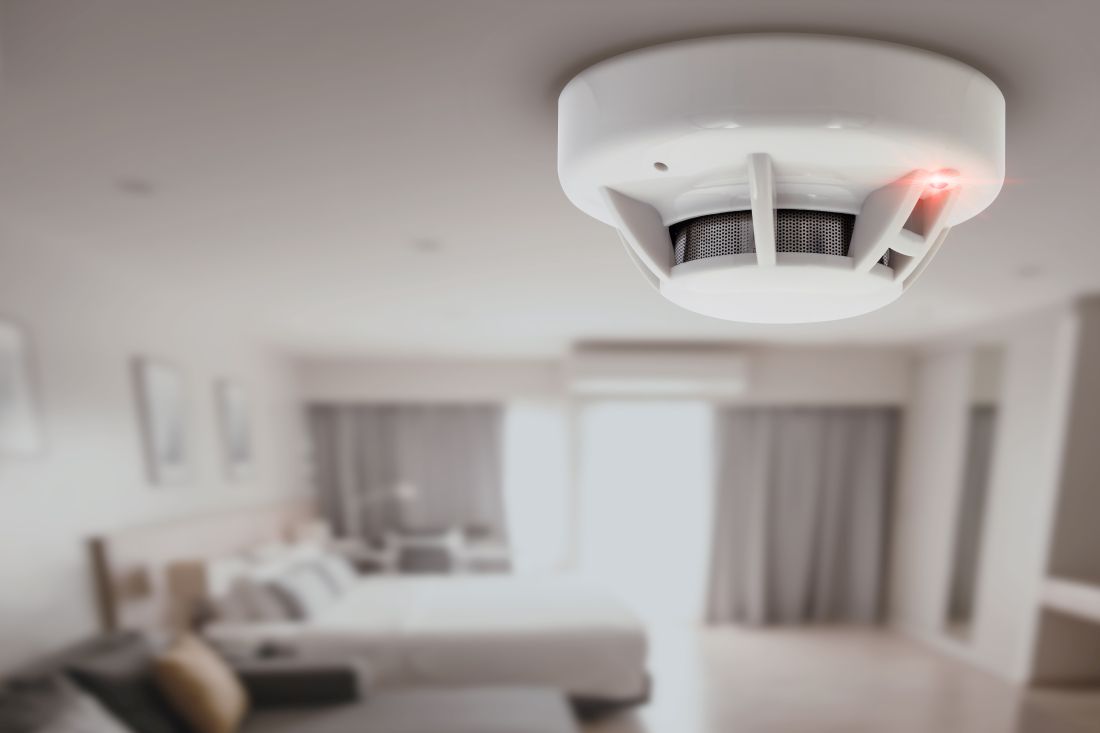Our homes are our castles, our sanctuaries and should be the place that we feel the safest. But did you know that the home is the most common place that accidents will occur and that accidents at home result in 6,000 deaths per year and account for 2.7 million A&E visits every year? And the kitchen isn’t the room where most accidents occur, it is the lounge / living room. These facts are frightening but a lot of them can be easily prevented – for example, don’t leave items on the stairs to trip over (no one actually takes them up when passing them and they just get left), add non-slips strips to the bottom of rugs and mats (especially in the bathroom), don’t leave sharp knives out on the kitchen counters when not using them or have pot handles overhanging the cooker hob. Unfortunately, accidents can and do happen. You won’t be able to prevent every accident in the home but you can put in place some home safety measures to minimise risk as much as possible, especially if you have young children around.
Firstly, make sure that you have essential home safety equipment in the house. Whether you have children in the house or not, the following items are a must have items for anyone that is serious about home safety:
- Smoke Alarms (preferably in every bedroom and on each level of your home)
- Heat Alarm (install in the kitchen)
- Carbon Monoxide Alarms (near the boiler and near bedrooms)
- Fire Extinguisher / Fire Blanket
- Fire Escape Plan (so that everybody knows the best way out of the house if the event of a fire)
- First Aid Kit
- Torch with Spare Batteries
Regularly check that alarms are working (once a month), they should have a test button, if they have removeable and replaceable batteries make sure that you change them once a year. Smoke, heat and carbon monoxide alarms save lives, there is no excuse not to have them. Always keep a torch with spare batteries available and make sure that the first aid kit is always fully stocked in case of emergency.
- Don’t overload plug sockets and extension leads / blocks. Don’t have power-hungry appliances such as kettles, toasters and microwaves shouldn’t be on the same extension.
- Make sure electronic items are switched off after use (it will also save you money if everything is not left on standby).
- Use the correct fuses in your plugs (3A Fuse – table lamp, standard lamp, television, DVD player, computer, mixer, most blenders, fridges and freezers. 13A Fuse – washing machine, dishwasher, microwave, kettle, toaster, iron).
- Don’t have cables coiled as they can overheat and cause a fire.
- Check cables to make sure that none are damaged or have loose connections.
- Don’t run electric cables / cords under rugs or across doorways.
- Ensure lights bulbs are the correct wattage for your fittings.
- If you use candles, don’t place them near curtains and always extinguish them when finished. Maybe consider using flameless candles.
- Keep medicines out of reach from children, preferably in a locked medicine box.
- Lock doors even when you’re at home.
- Secure windows with window locks and restrictors (keep the keys close so that the window can be quickly opened in case on an emergency).
If you have babies, toddlers and young children in the house, you should also consider:
- Installing safety gates around dangerous areas such as at the top / bottom of the stairs and the door entry to the kitchen etc.
- Add cabinet / cupboard and drawer locks (especially on cupboards where you store cleaning materials and chemicals). You can even get ones that open by using a magnetic.
- Fit corner guards to furniture to help protect heads on sharp corners in the event of a stumble or fall.
- Secure heavy / large items (bookcase / television etc.) with furniture straps to the wall so they can’t easily be pulled over.
- Install an oven lock / fridge lock.
- Put in motion activated lights, perfect for dark hallways during the night.
- Install outlet/socket protectors and covers to stop inquisitive children playing with sockets or turning off equipment.
- Add pinch guard/hinge guards to your doors so that fingers don’t get trapped.
Having awareness of home safety alone is not enough to keep your family home safe and hopefully accident free, but it’s an excellent starting point. By following these safety tips, you can create a safer environment for yourself and your loved ones. This is not a comprehensive list of safety measures that you can put into your home, if you have more ideas please leave them in the comments below.
